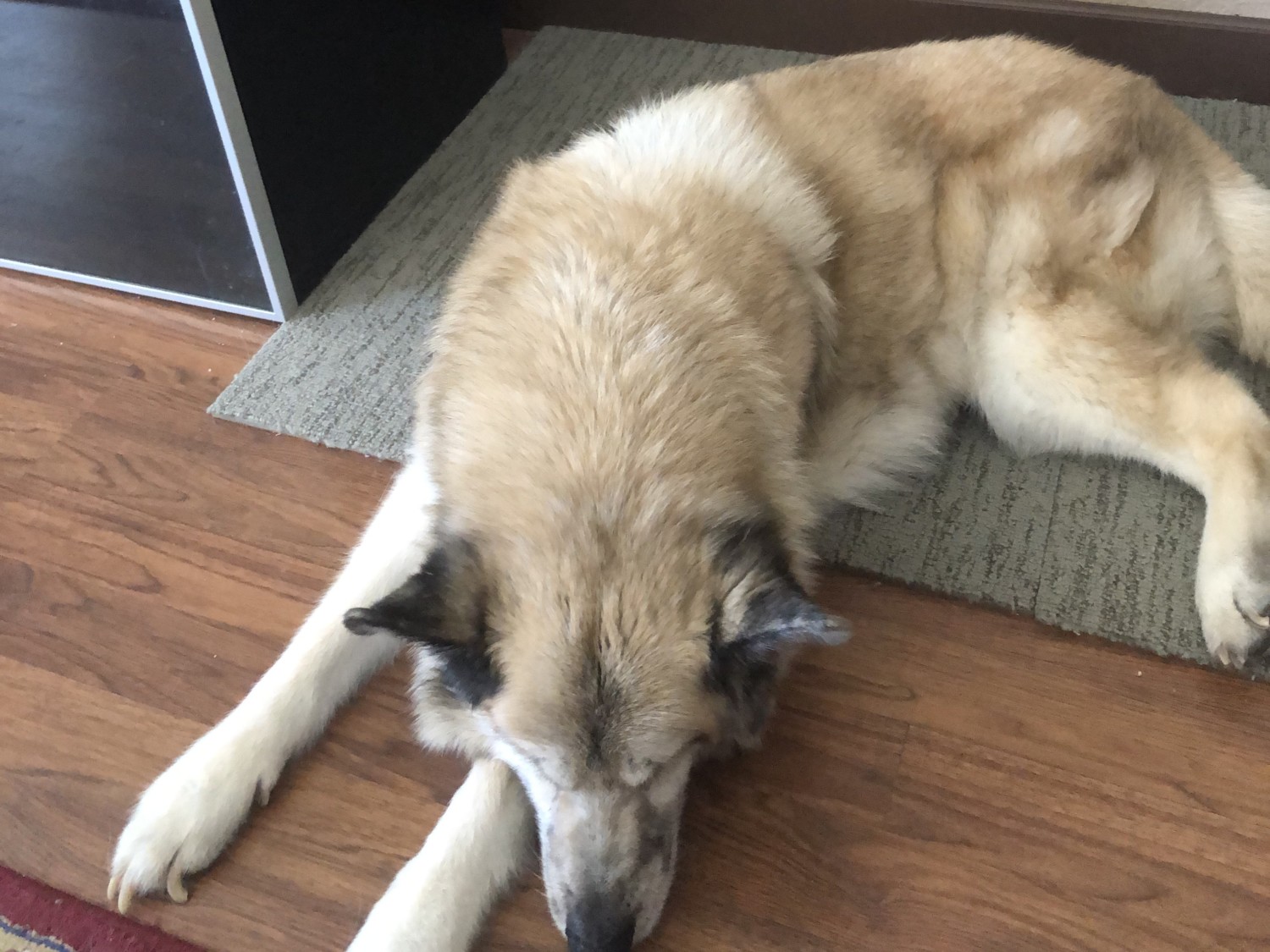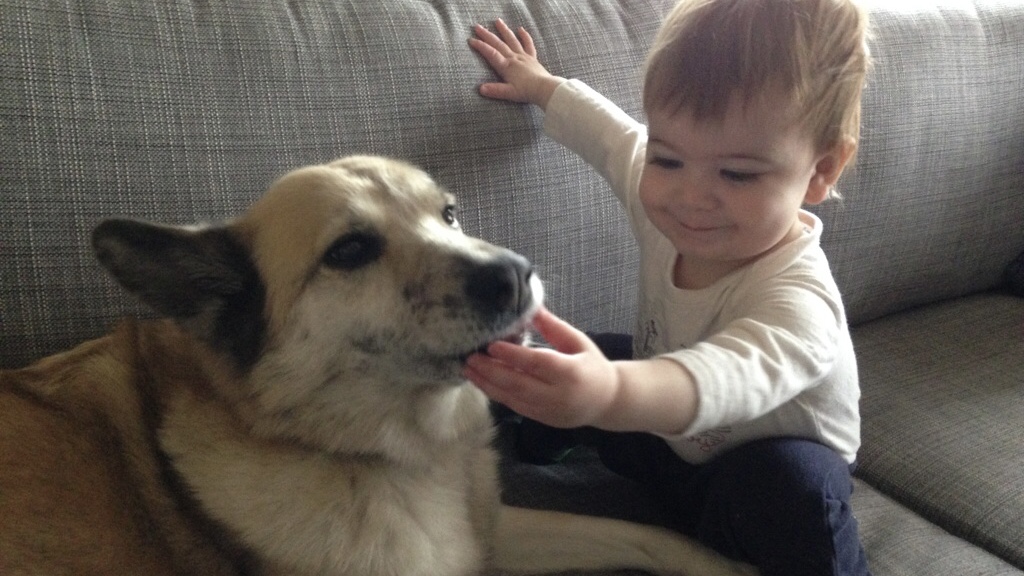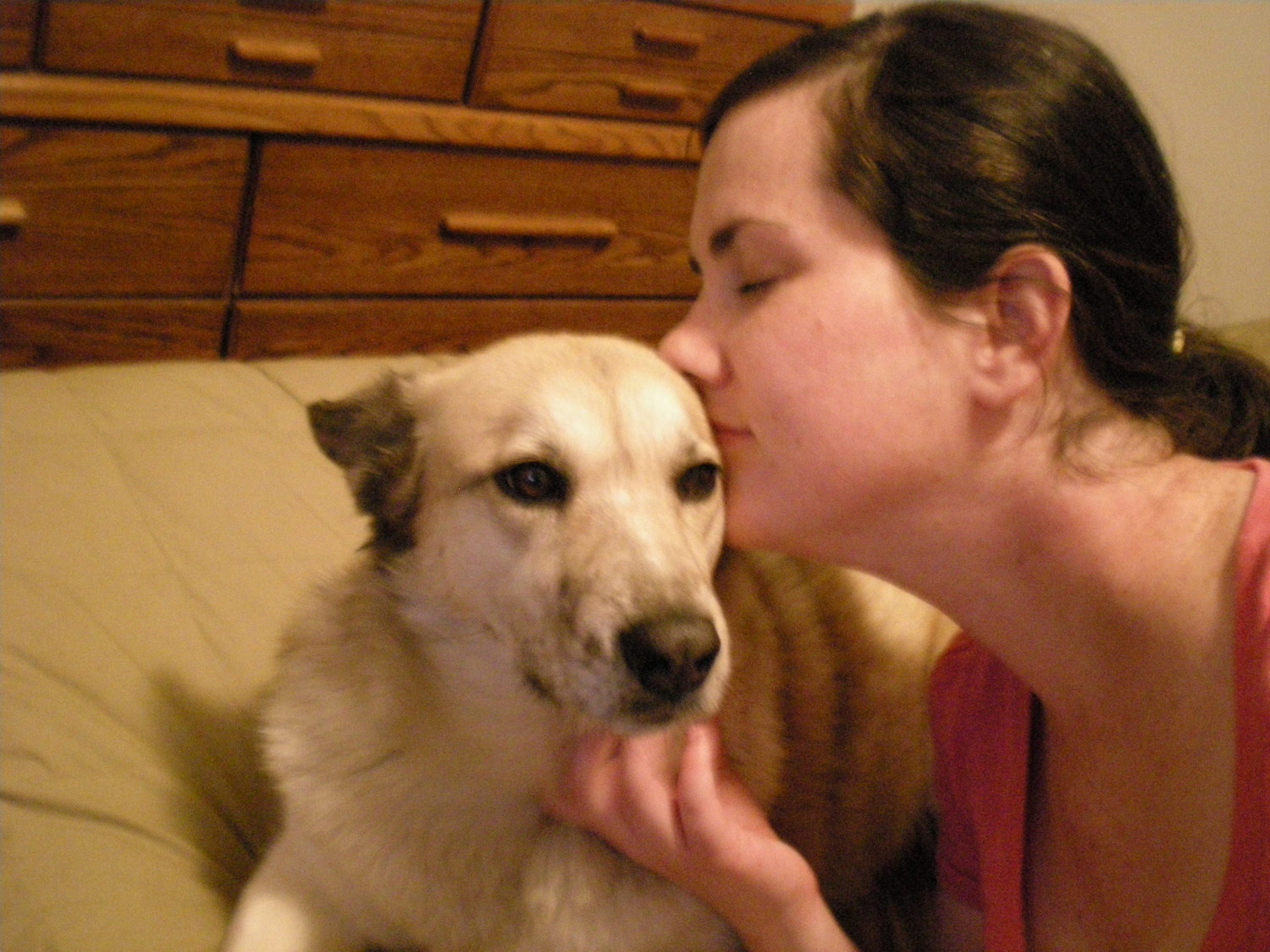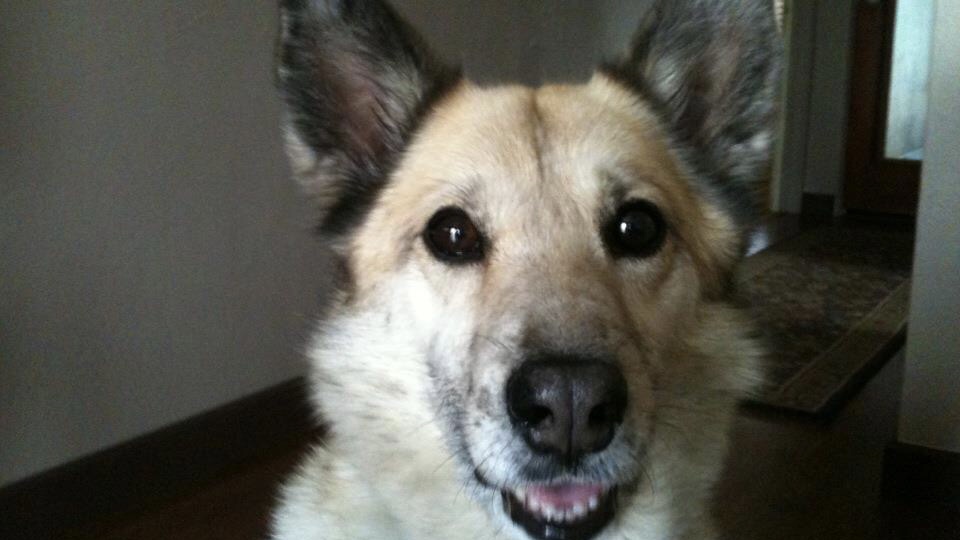The end was near.
In her final weeks and months, our old dog, Daisy, had trouble with her legs, struggling painfully to stand up or lay down and occasionally getting her front feet tangled. The vet theorized that she had a tumor on her spinal column, but at her age (16 or so) surgery was too dangerous.
The focus turned to comfort care and the looming question of when.
Then Daisy — always a bit of a neat freak — started losing control of her bowels and bladder. Her hip and leg pain seemed to be worsening. Eyesight and hearing were going. It was clear that she was suffering.
I hated the idea of saying goodbye to our beloved shelter pup in a sterile exam room — she despised vet visits. I also didn’t want to leave her body with strangers, albeit kind ones. After seeing our family through 14 years of good and bad times, I felt a duty to honor Daisy by caring for her body myself.

We booked a home euthanasia appointment with a licensed vet. I started poking around the internet for information on postmortem care.
When the day came, the vet was wonderfully calm and kind. Daisy laid on a cherished blanket taken from my late father-in-law’s house. It was a beautiful day, the March sun melting a recent snowfall, birds chattering in the trees.
She passed so quietly. I’d given myself permission to let it all out, so once the vet confirmed she was gone, I held her and wailed.
Then the work began. It was hard. It was scary. It was terribly sad. But I also felt like I did right by our beautiful friend.
If you have an animal companion you’d like to honor with a wake of your own, here are a few tips I can pass along.

Learn About The Euthanasia Process
The basic order of events is basically the same, whether at home or at the vet clinic. The vet administers a sedative that puts the pet into a deep sleep. Once they’re out, another drug is injected that stops the animal’s heart. And that’s it.
It costs more to have the vet make a house call, but it was totally worth it for us. Daisy fell asleep with the taste of steak in her mouth and with my husband and me at her side. We petted her and whispered in her enormous ears the whole time. Her breathing quickened a bit after the fatal drug went in, then it slowed, then it stopped.
Talk It Over With The Family
We have two kids, ages 4 and 8, who’ve never experienced a loved one’s demise. They knew Daisy was old and would probably die soon, so we explained a couple of weeks prior that the visiting vet would speed her transition to prevent further suffering.
From there, I let them decide how — and if — they wanted to participate. My 8-year-old son preferred to stay out of it. My 4-year-old didn’t want to attend the procedure (a relief), but she helped decorate Daisy’s body with flowers afterward, and gently petted and kissed her as we sat with her that afternoon.
Not everybody wants to get this close-up to death, and that is absolutely understandable.

Get Childcare If You Can
I was fortunate my mom and sister were available to help out that day. We didn’t have to worry about what the kids were up to while we said goodbye, and I think having some extra family at home was a comfort for everyone.
If the kids will be around, consider scheduling the euthanasia appointment for later in the day — that way bedtime won’t be too far off and you can (hopefully) have some space to grieve.
It Won’t Be Gross
There’s a misconception that dead bodies are instantly grotesque, all leaking fluids and lolling tongues. Not true. The body still looks like your loved one. Fur is soft. Ears are floppy. The body stays warm for a while.
The only slightly yucky thing that happened: When my husband hoisted Daisy up to move her body, a little pee dribbled out. Nothing we hadn’t seen before.
You Have Time
After your pet passes, there’s no need to rush. Rigor mortis — the phase of death that causes tissues to stiffen — takes two to three hours to set in. You have that time to hold your dearly departed, cry, snuggle, say a prayer, whatever you want.

Keep Ice On Hand
Ice keeps the body cool, staving off the beginnings of decomposition. We filled an old plastic baby pool with bags of ice, covered that with a tarp, then put a blanket on top for a cozier look. Daisy laid on the blanket, appearing to be in a deep slumber.
It helped that it was cold in the garage, too — warmer temps require replacing ice as it melts.
Plan For Your Needs
Once the novelty of having a dead dog in the garage wore off, our kids were back to their usual snacking requests.
I hadn’t thought much about the, uh, catering, so I was left trying to arrange meals for people between bouts of tears. Have frozen stuff ready to go, get something delivered, whatever works — just make the plan in advance so you’re not trying to create menus while in the throes of new grief.

Go Easy On Yourself
There’s no wrong way to do any of this. If the idea of an at-home dog wake is bizarre to you, that is totally fine. If some parts sound nice, but others don’t? Also fine. The key is to lock into what works for your family and go from there.
Daisy’s home wake felt like the grieving equivalent of ripping off a Band-Aid. I cried more, and harder, in those 24 hours than perhaps I ever had. But it also helped me, on some primitive level, truly accept her loss.
Taking care of her on her last journey took a little of the sting out of it all. She had a good life — and a good death.
This story originally appeared on Simplemost. Checkout Simplemost for additional stories.


